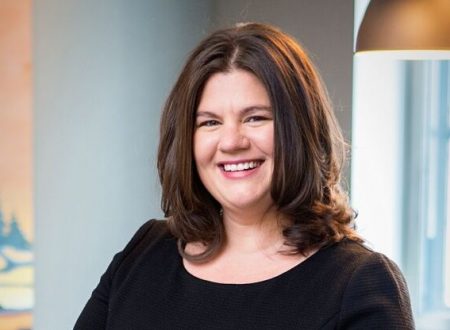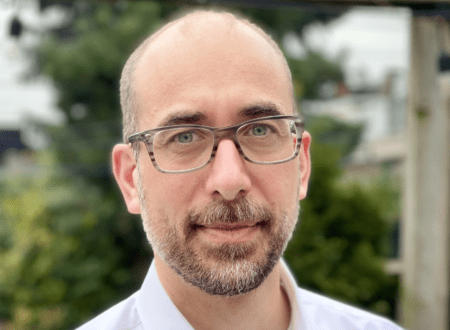Maclean’s magazine recently published this column by Scott Gilmore. People got mad, especially Indigenous peoples and allies who advocate with them. Then OKT Partner Bob Rae wrote this response in the Globe and Mail, and Chelsea Vowel wrote this great piece for Canadaland Commons. It seems like Gilmore and Maclean’s couldn’t get enough of the controversy, because yesterday Gilmore and Maclean’s released a follow-up column, detailing so-called “hard truths” in which Gilmore doubles down on his conclusions, based on statistics about urban-dwelling versus remote-dwelling Indigenous peoples.
Let’s get something out of the way: we think the first Gilmore column was utterly tasteless. It’s unnecessary to exploit the deaths of people to advance a political agenda about whether First Nations people should live in their remote communities, and Gilmore could have made his point without it. And while we’re at it, maybe in a column that uses as its springboard a national tragedy related to gun violence, Gilmore could leave out blithe references to sending Indigenous communities backhoes to dig their own graves.
In the first column, Mr. Gilmore says, of La Loche and in similar Indigenous communities across the north, “[y]ou can keep going until eventually you have stop in exhaustion and admit the north itself is violent and has been forever.” To which we say: you may be exhausted, Mr. Gilmore, but we’re just getting started. And we admit no such thing.
The startling reduction of the massive tapestry of lived experience and social realities of the north to violence (forever) gives Mr. Gilmore the plank he needs to once again suggest that “we” (by which he presumably means non-Indigenous Canadians) should encourage Indigenous peoples to get “integrated into one of the world’s healthiest, safest, most rewarding societies” – which is to say, the society one finds in our cities. This idea isn’t new. It’s as old as colonialism itself. Here’s a fun test: read the following, and tell us who wrote it and when:
It is much better for an Indigenous person to be a member of the Canadian nationality, admitted on equal terms to all the privileges of Canadian citizenship, sharing the advantages of Canadian protection, and the dignity and prestige of Canadian power — than to sulk on his own rocks, the half-savage relic of past times, revolving in his own little mental orbit, without participation or interest in the general movement of the world.
Well that’s a bit of a trick. Most of the quotation is from John Stuart Mill, from On Nationality in 1861. We just swapped out “French” for “Canadian” and let an “Indigenous person” stand in for Mill’s targets, who were the Bretons and Basques of French Navarre (he thought they should join the French nation) and “the Welshman or the Scottish Highlander” who were encouraged to be British. This line of thinking was carried on famously with the 1969 White Paper, and modern-day Twitter trolls push this stuff day-in and day-out. We see the same thing every time there is a tragedy in the north – for instance, when Kashechewan First Nation flooded in 2006, the author of a report commissioned by the Federal government recommended that the community should move to Timmins, a recommendation that was unsurprisingly rejected by the people of Kashechewan First Nation. Then, the Federal government rejected another plausible suggestion for that community, which was moving the community to a location not so prone to flooding.
To be clear, we don’t lay all this at the feet of Mr. Gilmore. His argument gives at least some attention to cultural continuity, with his suggestions of annual visits to reserve, among others. That’s all to the good, but presumes we can sever culture and well-being from being on the land. However, we know that culture, well-being and the land are, to Indigenous peoples, often inseparable.
In the second column, Gilmore opines that “for Indigenous families living on reserves, the single most effective thing they can do to improve their health, education, safety, and income is to leave. And if they make this choice, we have a moral obligation to give them at the very least the same support we provide refugees.” Equal opportunity sure is hard to argue with. But why should it only be delivered in cities, and not on reserves or in the rural communities where many Indigenous peoples actually live? Surely “our” moral obligations to Indigenous peoples don’t end at the city limits.
To our minds, the notion of offering help only when Indigenous peoples go where they ought to go echoes the bygone policy approach of Sir. John A. Macdonald, who incentivised Indigenous mobility to the state’s preferred location (at that time, the reserves) by providing food rations only to those who took up the relocation, as set out exhaustively in James Daschuk’s book “Clearing the Plains”.
Equal access to education, housing, health care, and mental health services is a good start. But let’s take this good start and apply it to where Indigenous communities are located. The policy option of equal opportunity on reserve hasn’t even been attempted by federal or provincial governments in any Indigenous communities, as was made abundantly clear in the recent Canadian Human Rights Tribunal decision of First Nations Child and Family Caring Society et al v. Canada. In that decision, the Tribunal held that First Nations children are being systemically discriminated against because of dramatic underfunding of child and family services on reserve.
The policy option of equal opportunity on reserve (which we would describe as the “legal obligation” of a fundamental human right, or “the absence of widespread discrimination by the state”, rather than a “moral obligation”) is not one Gilmore, or any other proponent of the “move to the cities” solution has adequately grappled with, as far as we have seen. The inequality of opportunity, in funding terms, spans other service areas such as education, infrastructure, health care and housing. Where are the calls to fix that?
The “move to the cities” proponents also seem to be singling out Indigenous peoples as the only people whose freedom to live anywhere in this country should be undermined by “incentives” to live elsewhere. No one says that refugees or immigrants cannot live in rural or “remote” areas if they choose, or that they should be incentivized to live in cities. No one seriously proposes that we incentivize the people of Windsor or rural New Brunswick to move to Toronto, Montreal and Vancouver. In fact, our constitution enshrines the right of less wealthy, predominantly rural provinces to receive equalization payments from other provinces. Regional fairness is a fundamental Canadian value. We respect the choices people make about where they want to live, and we appreciate the different cultures, histories, and traditions that are often intimately tied to those choices.
Of course, the suggestion that a move to the cities is a panacea is also ill-founded. If we want to talk statistics, it’s clear that urban-dwelling Indigenous people still lag behind non-Indigenous urban-dwelling people in socio-economic indicators. So it can’t be that moving to cities is the only possible solution. Ta-Nehisi Coates argued recently that for Black Americans, it’s not just about economics, it’s also about racism and white supremacy. Those arguments can apply to Indigenous peoples in Canada as well, along with considerations of the dispossession of lands, resources and traditional economies that Indigenous people have faced, with settler Canadians reaping the benefits of that dispossession.
Lastly, we can’t help but be a bit glib ourselves. We’ll agree that Mr. Gilmore is partially onto something. We are quite confident that Mr. Gilmore’s challenge would be taken up by many Indigenous Nations whose citizens would love to live in the cities, because that’s where they are from. Canada’s cities were, after all, appropriated by settlers precisely because they were good places to live. They are often close to water, they can sustain a lot of people, often on abundant high ground. In which case the solution probably lies in giving Vancouver back the Musqueam, Squamish, and Tsleil-Waututh, Toronto back to the Mississaugas of the New Credit, Ottawa to the Algonquin, and so on, from coast to coast to coast. Then we could implement the policy of providing superior access to services only in cities. But we suspect that’s not what the “move to the cities” folks want.
Let’s get on with hashing out some fresh ideas. Proposals that incentivize moves to particular locations that “we” think will work better for Indigenous peoples at any given time don’t contribute anything new to the conversation.
By Maggie Wente, Michael McClurg and Bryce Edwards
Related Posts

Canada Ordered to Stop Discriminating Against First Nations Children, For the Third Time
Today, the Canadian Human Rights Tribunal released a decision in the ongoing case First Nations Child and Family Caring Society et al v. Canada, in which the…
Read More...
Madawaska First Nation Wins Casino Revenue Sharing Case
Madawaska First Nation is celebrating a win in its legal challenge of New Brunswick’s refusal to share casino revenue with the First Nation. The New Brunswick Court of Appeal released…
Read More...
Respect and Responsibility: Integrating Indigenous Rights and Private Land Conservation in Canada
This post contains the executive summary of a new report, Respect and Responsibility: Integrating Indigenous Rights and Private Conservation in Canada.
To download the full report, please click here.
To…
Read More...


